While blackgrass is a growing concern on this island, it has long been a serious issue in Britain and the problems and experiences of dealing with the weed are recalled in this article.
Blackgrass (Alopecurus myosuroides) is the most important herbicide-resistant weed in Europe, occurring in at least 10 countries. In Britain, it occurs on at least 20,000 farms in 35 counties and mainly in autumn-sown crops.
It is a very competitive weed and populations have the potential to increase rapidly, due to its ability to produce high seed numbers. Its aggressive growth pattern means that yield losses can be substantial.
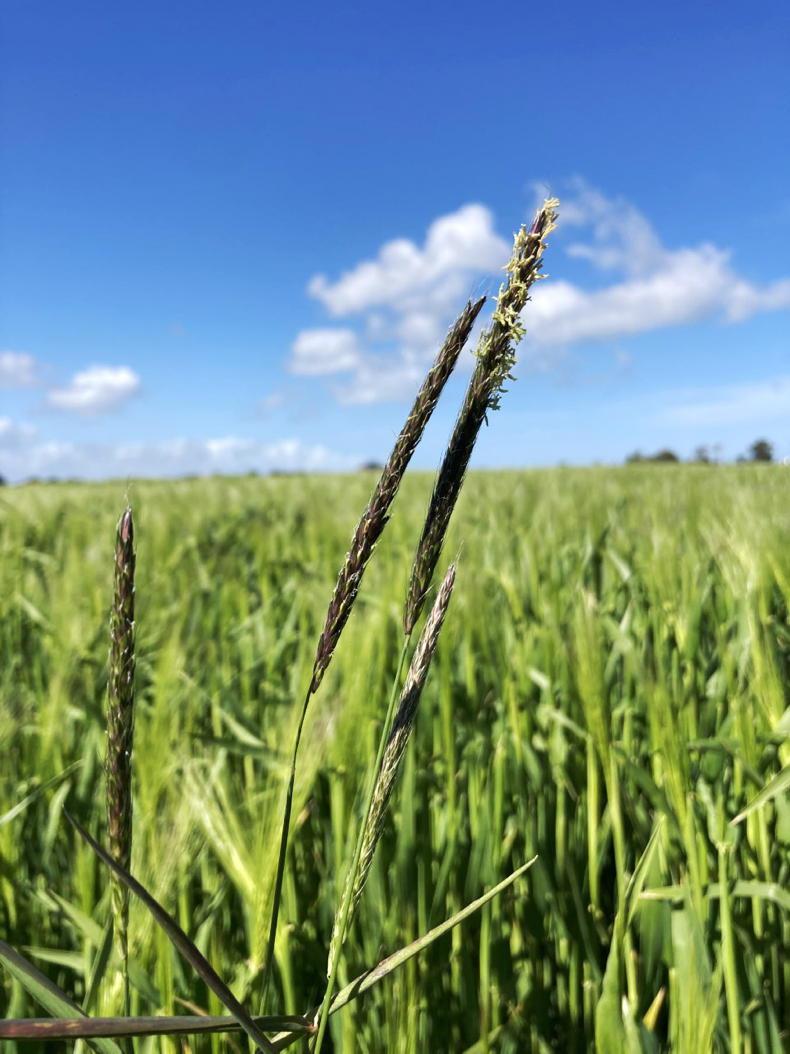
Blackgrass heads flowering in a crop of winter barley.
The estimated average yield loss from blackgrass in winter wheat in Britain was 0.4t/ha, or 5% of the average yield (8.3t/ha), at a cost of £178/ha. At very high weed densities, the average yield loss was 1.8t/ha or £450/ha (based in 2014 prices).
The drivers
Blackgrass levels started to increase in the 1980s due to a combination of four factors:
Autumn-sown rotations (both cereals and break crops). A trend towards earlier drilling. Loss of herbicides.An increase in herbicide resistance.Herbicide use in Britain changed significantly due to the increase in blackgrass. Then isoproturon and trifuralin were withdrawn in 2010, because of their presence in drinking water.
As a result, there has been a move from using contact herbicides such as mesosulfuron towards greater use of residual herbicides such as pendimethalin, flufenacet, prosulfocarb and triallate.
Herbicide resistance
There are three types of herbicide resistance in blackgrass.
Non-target site: this is the most common type of resistance that affects most herbicides to some degree. It results in detoxification of the active, but generally does not result in a complete loss of control and tends to increase slowly.ACCase target site resistance: this blocks the site of action specific to “fop”, “dim” and “den” herbicides (HRAC group one). It only affects this herbicide type, increases rapidly and can result in poor control.ALS target site resistance: this blocks the site of action of sulfonylureas (HRAC group two). It only affects this type of herbicide, also increases rapidly, and can result in poor control.In 2013, 122 samples were tested in Britain and all three types of resistance were present in 46% of the samples. In 2019, 64 tests indicated that resistance was increasing, with 58% of samples having all three types of resistance (Figure 2).
ALS resistance had increased significantly and was present in 89% of samples.
So, herbicide-resistant blackgrass is more widespread now than previously. It has spread north and into Scotland, to the south and west of England and into Wales.
Spread has mainly happened through the transport and use of straw for feeding and bedding, as well as by contractors’ balers, pea viners and combines and via secondhand machinery.
Impact of agronomy
A key piece of research that has changed the way British farmers deal with blackgrass was a review of the effects of crop agronomy on the management of the weed.
This showed the effects of cultivation techniques, sowing date, crop density and cultivar choice on blackgrass infestations in cereal crops and it quantified the benefits of non-chemical control (Table 1).
Traditionally, we waited to seed the weed and then relied on herbicides for control.
The advent of herbicide resistance changed this and herbicides quickly became ineffective.
More emphasis must now be placed on cultural control. This requires an in-depth knowledge of the biology of the weed, how this affects crop choice and rotation, how we manage the weed seedbank, the type and timing of cultivations, drilling date, the importance of crop competition and, finally, herbicide choice, application, and timing.
Preventing seed return
Prevention of seed return is a key part of control. This depends on good chemical control, hand-rogueing prior to seed set and a willingness to destroy areas of the crop if necessary.
With blackgrass, we need control levels of 97% to prevent populations from increasing and this is not achievable from herbicides alone.
The move by farmers to cultural control has helped many of them to reduce their levels of blackgrass, but it isn’t easy. Attention to detail is important throughout the whole rotation and in every crop.
This extends to preventing spread between fields by balers, combines and cultivation equipment.
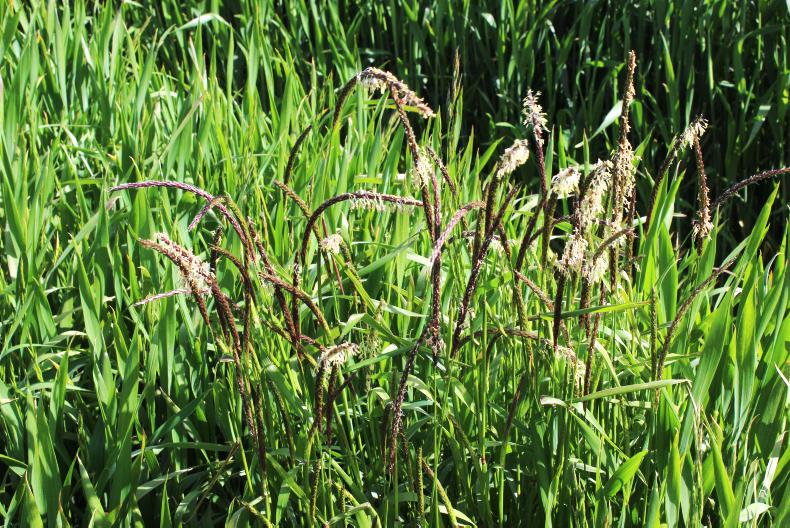
Heads of blackgrass partially flowering having turned dark in colour.
Successful reduction will take a minimum of seven to 10 years with constant vigilance.
Research continues to evaluate cultural control options for blackgrass, such as delaying drilling in winter cereals, the contribution of a move to spring cereals, grazing options and preventing the development of resistance to glyphosate.
A grower’s experience Andrew Mahon, farm manager at Bromborough Estate in north Bedfordshire
I have been managing farms in the UK for the past 20 years and have been the farm manager at Bromborough Estate in north Bedfordshire since 2008. Bromborough Estate is approximately an hour north of London near Bedford and comprises approximately 750ha of mixed cropping on predominantly heavy clay soils.
I have managed three farms since I moved to the UK from Dublin. Having completed a degree in agriculture with crop management, I went to work for Velcourt as a trainee manager. But when the farm I was managing was sold, I left the company and joined Bromborough Estate.
One thing that all the farms had in common was blackgrass. Here on Bromborough Estate, it was present in nearly every field at varying levels. The blackgrass here has also been confirmed as resistant to ALS chemistry, which is very common in Britain.
The farm grows a range of crops, but spring and winter wheat are now the main crops, along with spring oats, linseed and beans and about 70ha of grass.
Controlling blackgrass
Cultural control is vital to help achieve satisfactory control of our ALS-resistant blackgrass.
Up until 2015, we had to burn off patches of winter wheat with glyphosate because the blackgrass was so bad.
We had to take one 22ha field out of arable production completely due to blackgrass.
In 2015, we switched from a strip-till system to no-till and we have since seen a big decrease in blackgrass populations.
We are now moving far less soil during crop establishment and the result is that we are seeing fewer flushes of blackgrass germination in crops, with fewer plants emerging from these flushes.
We also stopped using stale seedbeds and now allow blackgrass to germinate naturally. Because we are largely preventing seed return, we are not adding new seeds to the soil seed bank, which is being depleted.
In doing this, we only have to deal with the seeds that germinate, as many seeds will become unviable on the soil surface due to weather conditions or are eaten by birds, etc.
Spring cropping
We also moved to spring cropping, which, I think, has been a huge part of the success in reducing blackgrass populations.
We have been at roughly 50/50 winter/spring cropping for the past two seasons, mainly due to the weather in the autumn, but we usually aim for about 30% spring cropping.
Because our blackgrass is ALS resistant, we must stack our herbicide programmes in the autumn.
Our typical autumn herbicide programme consists of a pre-sowing treatment of 2.0l/ha of glyphosate, followed by an Avadex + Liberator (similar to Firebird) + Defy pre-emerge tank mix.
This is followed by a peri-emerge application of Macho (straight Flufenacet). This all costs about £150/ha (€70/ac) when you include the spring herbicides for broadleaved weed control.
Now that we are getting on top of the blackgrass population, we have dropped the Avadex. We are also not using the peri-emergence flufenacet treatment unless I am certain there will be infestation pressure.
The major contributors to the success in controlling blackgrass on the farm have been:
The switch to no-till. The introduction of spring cropping to the rotation. Together, these two cultural control measures have brought blackgrass populations down to manageable levels on the farm.
The biggest failures were min-till and strip-till. While these systems worked in terms of crop establishment and yield performance, blackgrass control became increasingly difficult, as the soil movement was helping the germination and establishment of blackgrass.
Key points
Herbicide resistance is a huge challenge with blackgrass control.Cultural control mechanisms must be an essential element of getting a problem under control.No-till and spring cropping have been important tools for Andrew Mahon.
While blackgrass is a growing concern on this island, it has long been a serious issue in Britain and the problems and experiences of dealing with the weed are recalled in this article.
Blackgrass (Alopecurus myosuroides) is the most important herbicide-resistant weed in Europe, occurring in at least 10 countries. In Britain, it occurs on at least 20,000 farms in 35 counties and mainly in autumn-sown crops.
It is a very competitive weed and populations have the potential to increase rapidly, due to its ability to produce high seed numbers. Its aggressive growth pattern means that yield losses can be substantial.

Blackgrass heads flowering in a crop of winter barley.
The estimated average yield loss from blackgrass in winter wheat in Britain was 0.4t/ha, or 5% of the average yield (8.3t/ha), at a cost of £178/ha. At very high weed densities, the average yield loss was 1.8t/ha or £450/ha (based in 2014 prices).
The drivers
Blackgrass levels started to increase in the 1980s due to a combination of four factors:
Autumn-sown rotations (both cereals and break crops). A trend towards earlier drilling. Loss of herbicides.An increase in herbicide resistance.Herbicide use in Britain changed significantly due to the increase in blackgrass. Then isoproturon and trifuralin were withdrawn in 2010, because of their presence in drinking water.
As a result, there has been a move from using contact herbicides such as mesosulfuron towards greater use of residual herbicides such as pendimethalin, flufenacet, prosulfocarb and triallate.
Herbicide resistance
There are three types of herbicide resistance in blackgrass.
Non-target site: this is the most common type of resistance that affects most herbicides to some degree. It results in detoxification of the active, but generally does not result in a complete loss of control and tends to increase slowly.ACCase target site resistance: this blocks the site of action specific to “fop”, “dim” and “den” herbicides (HRAC group one). It only affects this herbicide type, increases rapidly and can result in poor control.ALS target site resistance: this blocks the site of action of sulfonylureas (HRAC group two). It only affects this type of herbicide, also increases rapidly, and can result in poor control.In 2013, 122 samples were tested in Britain and all three types of resistance were present in 46% of the samples. In 2019, 64 tests indicated that resistance was increasing, with 58% of samples having all three types of resistance (Figure 2).
ALS resistance had increased significantly and was present in 89% of samples.
So, herbicide-resistant blackgrass is more widespread now than previously. It has spread north and into Scotland, to the south and west of England and into Wales.
Spread has mainly happened through the transport and use of straw for feeding and bedding, as well as by contractors’ balers, pea viners and combines and via secondhand machinery.
Impact of agronomy
A key piece of research that has changed the way British farmers deal with blackgrass was a review of the effects of crop agronomy on the management of the weed.
This showed the effects of cultivation techniques, sowing date, crop density and cultivar choice on blackgrass infestations in cereal crops and it quantified the benefits of non-chemical control (Table 1).
Traditionally, we waited to seed the weed and then relied on herbicides for control.
The advent of herbicide resistance changed this and herbicides quickly became ineffective.
More emphasis must now be placed on cultural control. This requires an in-depth knowledge of the biology of the weed, how this affects crop choice and rotation, how we manage the weed seedbank, the type and timing of cultivations, drilling date, the importance of crop competition and, finally, herbicide choice, application, and timing.
Preventing seed return
Prevention of seed return is a key part of control. This depends on good chemical control, hand-rogueing prior to seed set and a willingness to destroy areas of the crop if necessary.
With blackgrass, we need control levels of 97% to prevent populations from increasing and this is not achievable from herbicides alone.
The move by farmers to cultural control has helped many of them to reduce their levels of blackgrass, but it isn’t easy. Attention to detail is important throughout the whole rotation and in every crop.
This extends to preventing spread between fields by balers, combines and cultivation equipment.

Heads of blackgrass partially flowering having turned dark in colour.
Successful reduction will take a minimum of seven to 10 years with constant vigilance.
Research continues to evaluate cultural control options for blackgrass, such as delaying drilling in winter cereals, the contribution of a move to spring cereals, grazing options and preventing the development of resistance to glyphosate.
A grower’s experience Andrew Mahon, farm manager at Bromborough Estate in north Bedfordshire
I have been managing farms in the UK for the past 20 years and have been the farm manager at Bromborough Estate in north Bedfordshire since 2008. Bromborough Estate is approximately an hour north of London near Bedford and comprises approximately 750ha of mixed cropping on predominantly heavy clay soils.
I have managed three farms since I moved to the UK from Dublin. Having completed a degree in agriculture with crop management, I went to work for Velcourt as a trainee manager. But when the farm I was managing was sold, I left the company and joined Bromborough Estate.
One thing that all the farms had in common was blackgrass. Here on Bromborough Estate, it was present in nearly every field at varying levels. The blackgrass here has also been confirmed as resistant to ALS chemistry, which is very common in Britain.
The farm grows a range of crops, but spring and winter wheat are now the main crops, along with spring oats, linseed and beans and about 70ha of grass.
Controlling blackgrass
Cultural control is vital to help achieve satisfactory control of our ALS-resistant blackgrass.
Up until 2015, we had to burn off patches of winter wheat with glyphosate because the blackgrass was so bad.
We had to take one 22ha field out of arable production completely due to blackgrass.
In 2015, we switched from a strip-till system to no-till and we have since seen a big decrease in blackgrass populations.
We are now moving far less soil during crop establishment and the result is that we are seeing fewer flushes of blackgrass germination in crops, with fewer plants emerging from these flushes.
We also stopped using stale seedbeds and now allow blackgrass to germinate naturally. Because we are largely preventing seed return, we are not adding new seeds to the soil seed bank, which is being depleted.
In doing this, we only have to deal with the seeds that germinate, as many seeds will become unviable on the soil surface due to weather conditions or are eaten by birds, etc.
Spring cropping
We also moved to spring cropping, which, I think, has been a huge part of the success in reducing blackgrass populations.
We have been at roughly 50/50 winter/spring cropping for the past two seasons, mainly due to the weather in the autumn, but we usually aim for about 30% spring cropping.
Because our blackgrass is ALS resistant, we must stack our herbicide programmes in the autumn.
Our typical autumn herbicide programme consists of a pre-sowing treatment of 2.0l/ha of glyphosate, followed by an Avadex + Liberator (similar to Firebird) + Defy pre-emerge tank mix.
This is followed by a peri-emerge application of Macho (straight Flufenacet). This all costs about £150/ha (€70/ac) when you include the spring herbicides for broadleaved weed control.
Now that we are getting on top of the blackgrass population, we have dropped the Avadex. We are also not using the peri-emergence flufenacet treatment unless I am certain there will be infestation pressure.
The major contributors to the success in controlling blackgrass on the farm have been:
The switch to no-till. The introduction of spring cropping to the rotation. Together, these two cultural control measures have brought blackgrass populations down to manageable levels on the farm.
The biggest failures were min-till and strip-till. While these systems worked in terms of crop establishment and yield performance, blackgrass control became increasingly difficult, as the soil movement was helping the germination and establishment of blackgrass.
Key points
Herbicide resistance is a huge challenge with blackgrass control.Cultural control mechanisms must be an essential element of getting a problem under control.No-till and spring cropping have been important tools for Andrew Mahon. 





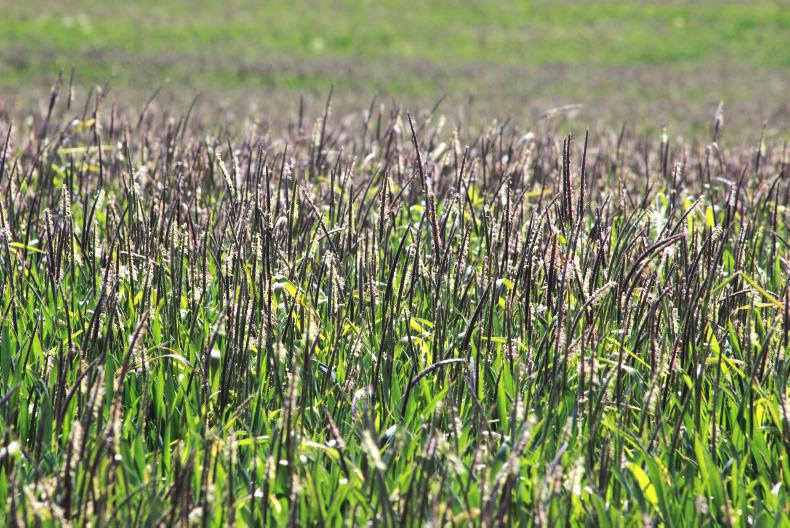
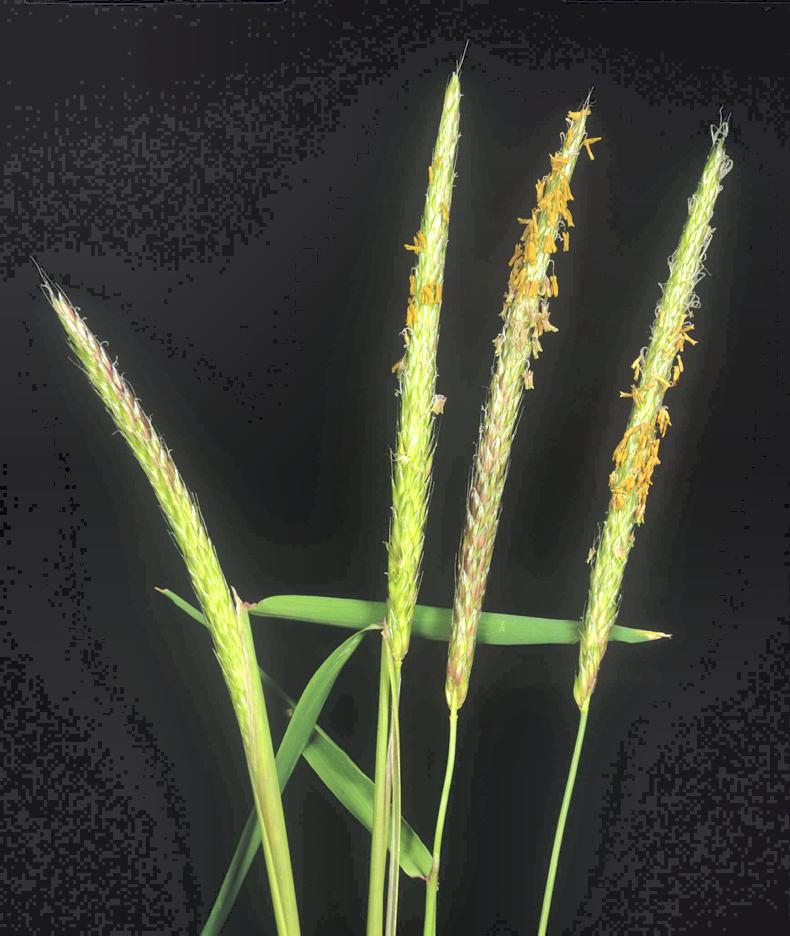
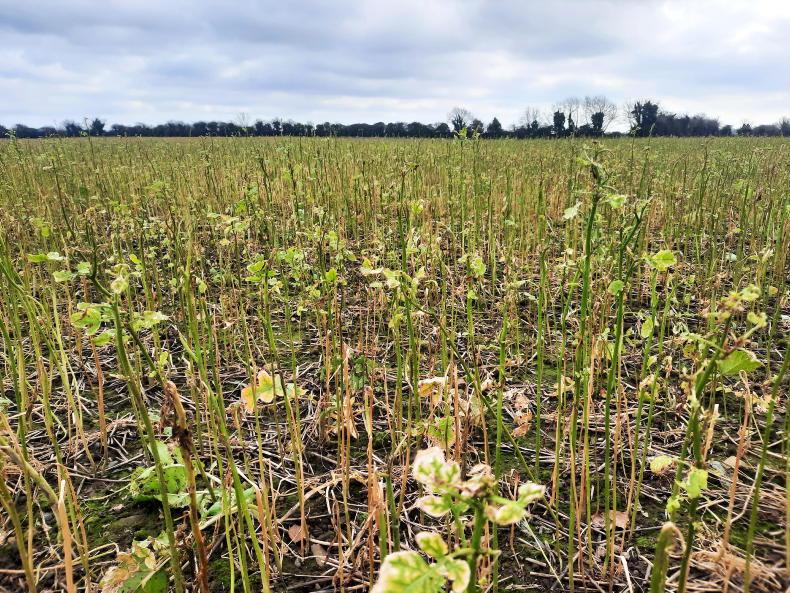
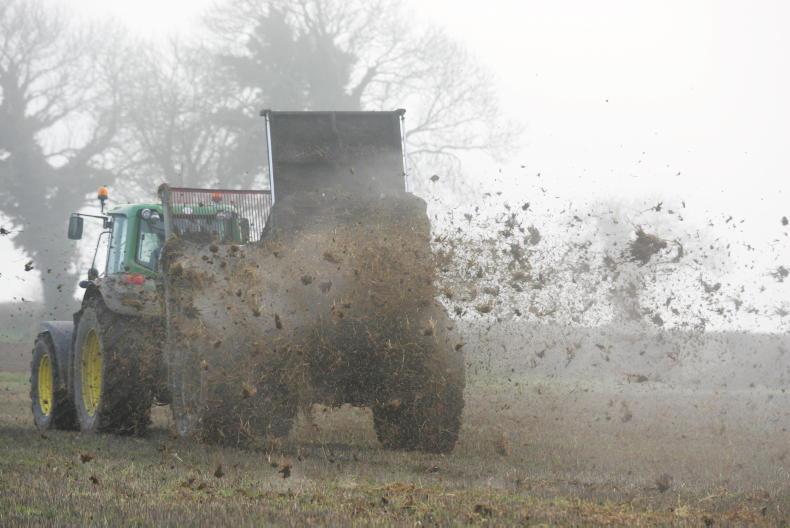
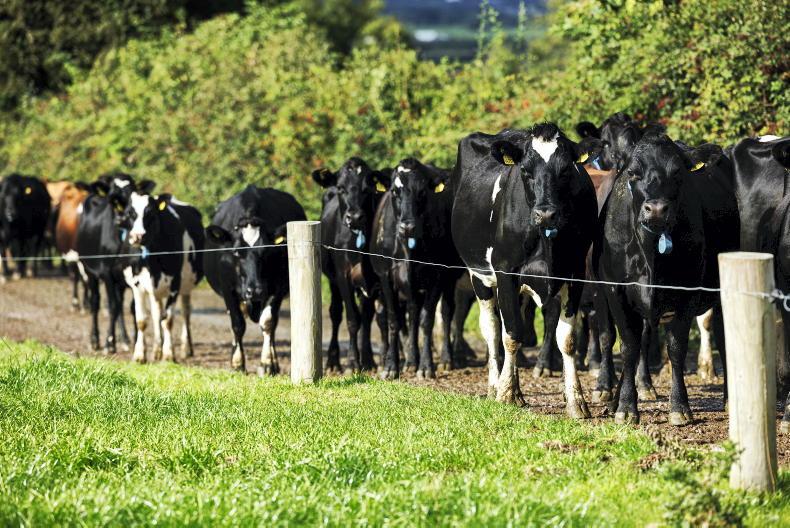
SHARING OPTIONS